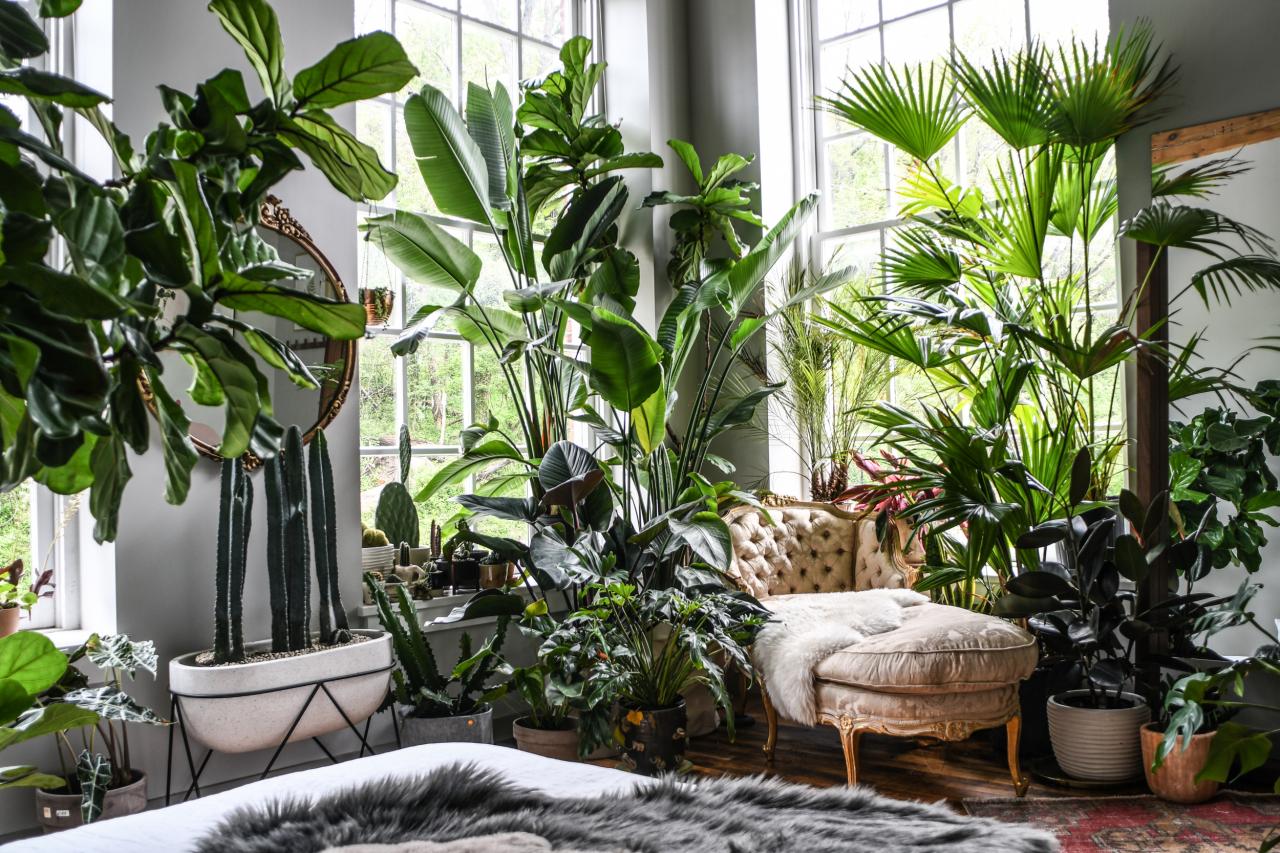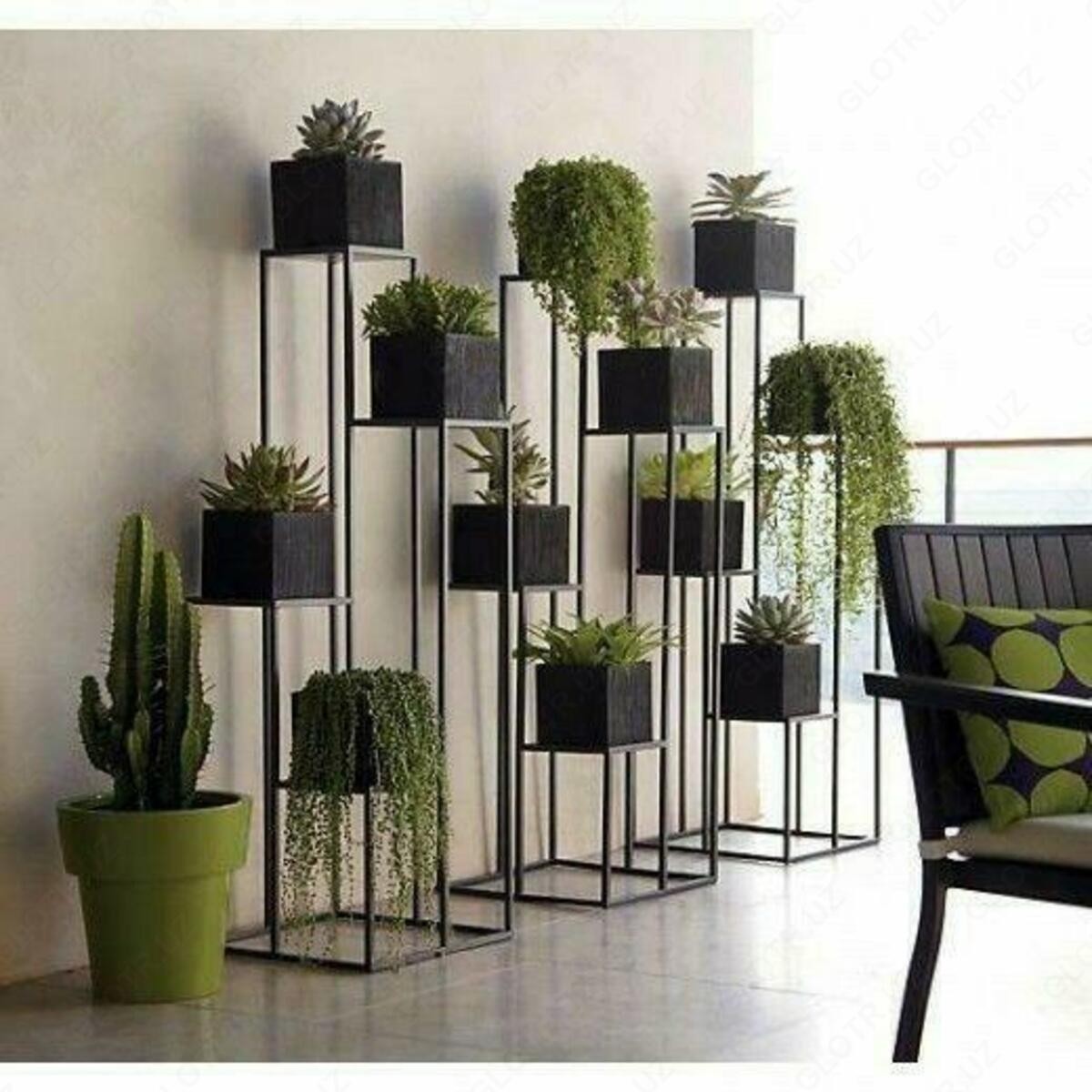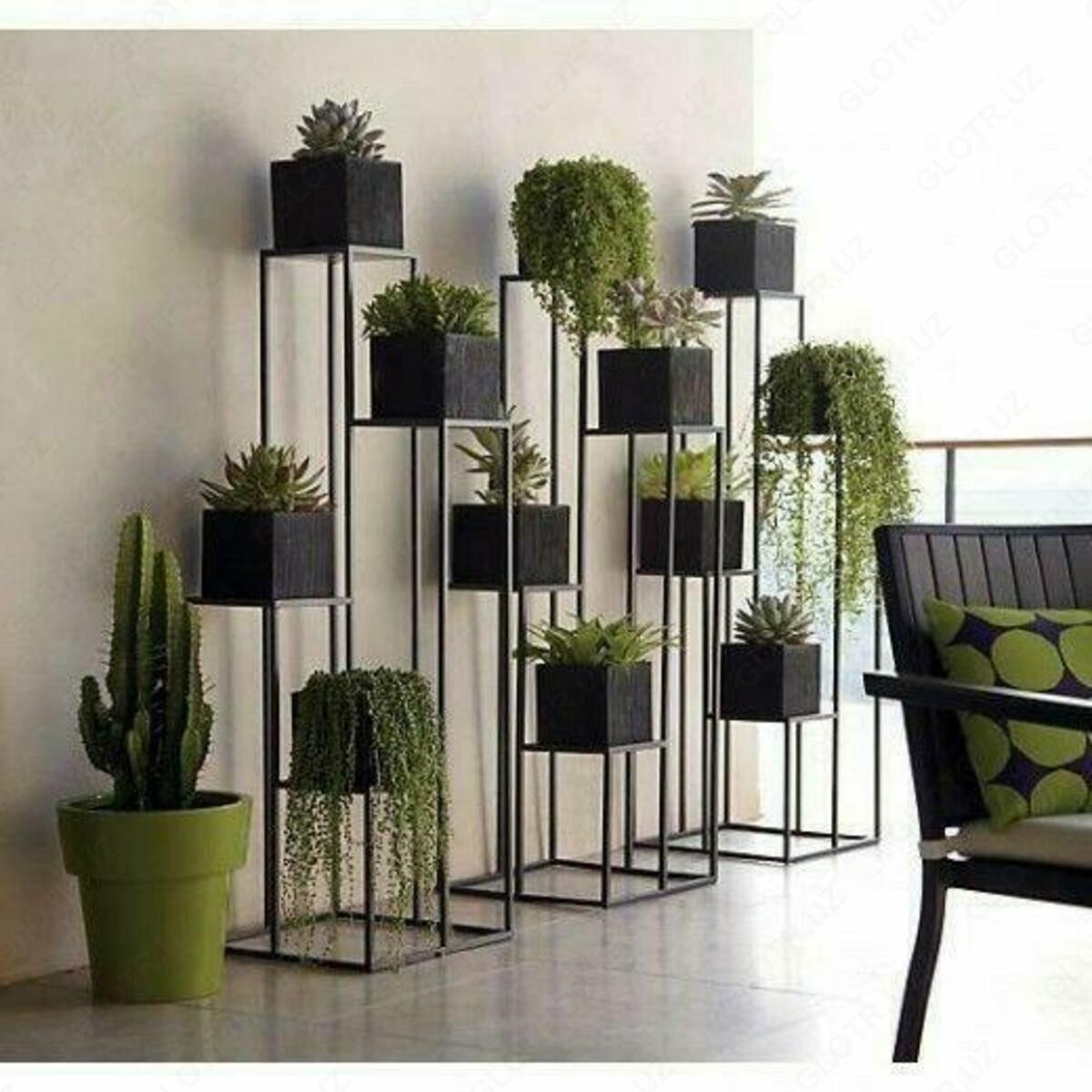Decorating With Large Indoor Plants: Tips and Ideas – Bringing the outdoors in is a trend that continues to grow in popularity, and large indoor plants are a stunning way to achieve this. These verdant giants not only add a touch of natural beauty to your home but also offer a range of benefits, from improving air quality to creating a sense of tranquility.
Whether you’re a seasoned plant parent or just starting your green thumb journey, incorporating large indoor plants into your decor can transform your space into a lush oasis.
From the majestic Monstera Deliciosa to the elegant Fiddle Leaf Fig, the world of large indoor plants is vast and diverse. Each plant boasts its unique characteristics and adds a distinct personality to your home. But choosing the right plant for your space requires careful consideration, factoring in factors such as light requirements, water needs, and the overall size and scale of the plant.
The right plant can be a focal point, a conversation starter, and a source of ongoing joy.
Choosing the Right Plant: Decorating With Large Indoor Plants: Tips And Ideas
Selecting the perfect large indoor plant involves careful consideration of several factors, including your personal preferences, the plant’s care requirements, and the space where it will reside.
Plant Care Requirements
Understanding a plant’s needs is crucial for its survival and thriving indoors.
- Light:Assess the amount of natural light your space receives. Some plants thrive in bright, direct sunlight, while others prefer indirect light or even low-light conditions.
- Water:Plants have varying water needs. Some require frequent watering, while others prefer drier conditions. Overwatering can be detrimental, leading to root rot.
- Humidity:Indoor environments can be dry, particularly during winter. Certain plants, like ferns and orchids, require higher humidity levels, which can be achieved by using humidifiers or placing plants on pebble trays filled with water.
Assessing Size and Scale
Choosing a plant that complements your space is essential.
- Plant Height and Width:Measure the available space and consider the mature height and width of the plant. Ensure there’s enough room for the plant to grow without overcrowding.
- Pot Size:Select a pot that is proportionate to the plant’s size. A too-small pot can restrict root growth, while a too-large pot can lead to overwatering.
- Visual Impact:Consider the visual impact of the plant in your space. A large plant can create a focal point, while smaller plants can add pops of greenery.
Placement and Arrangement

The placement and arrangement of large indoor plants are crucial for their well-being and aesthetic appeal. It’s important to consider the plant’s light requirements, the room’s size and layout, and the overall design scheme. By strategically positioning these leafy giants, you can create a visually appealing and harmonious environment.
Choosing the Right Location
The success of any large indoor plant hinges on selecting the appropriate location. Factors like light intensity, temperature, and humidity must be carefully considered.
- Light Requirements:Large indoor plants, like Fiddle Leaf Figs and Monstera Deliciosa, often require bright, indirect light. Avoid placing them in dimly lit corners or areas with direct sunlight, which can scorch their leaves.
- Temperature and Humidity:Most large indoor plants thrive in moderate temperatures between 65°F and 75°F. However, some, like ferns and orchids, prefer higher humidity levels. Consider placing them near a humidifier or grouping them together to create a microclimate.
- Space and Accessibility:Large plants need ample space to grow and thrive. They should be positioned in areas that allow for easy access for watering, dusting, and potential repotting. Avoid placing them in high-traffic areas where they could be easily knocked over.
Creating Visual Interest and Balance
Once you’ve identified the right locations for your large indoor plants, it’s time to arrange them for maximum visual impact.
- Focal Points:Large plants can serve as stunning focal points. Place them strategically to draw the eye and create a sense of grandeur. For instance, a majestic Bird of Paradise could be positioned near a fireplace or in a corner of a spacious living room.
Large indoor plants can dramatically transform a space, adding a touch of nature and a sense of tranquility. The Money Plant, with its lush, vibrant foliage, is a popular choice for both its beauty and air-purifying properties. If you’re considering incorporating a Money Plant into your home décor, The Ultimate Money Plant Care Guide For Beginners is an excellent resource to ensure its healthy growth and longevity.
Once established, you can experiment with different containers and locations to find the perfect spot for your Money Plant, enhancing the overall aesthetic of your indoor oasis.
- Height and Scale:Consider the height and scale of the plants in relation to the furniture and other elements in the room. Taller plants, like a Ficus Lyrata, can create a sense of verticality, while shorter plants, like a ZZ plant, can add a touch of ground cover.
Bringing the outdoors in with large indoor plants can create a serene atmosphere, but it’s important to consider the overall aesthetic. Just as you might choose companion plants for your hydrangeas in a woodland setting, Best Companion Plants for Hydrangeas in a Woodland Setting , selecting complementary plants for your indoor space can elevate the design.
Consider the shape, color, and texture of your plants to create a visually appealing and harmonious arrangement.
- Color and Texture:Large indoor plants come in a wide range of colors and textures. Mix and match different varieties to create visual interest and depth. For example, the lush green leaves of a Monstera Deliciosa can be complemented by the vibrant variegation of a Calathea or the delicate foliage of a Maidenhair Fern.
- Balance and Symmetry:When arranging large plants, strive for a sense of balance and symmetry. You can achieve this by mirroring the arrangement of plants on either side of a room or by using plants of similar sizes and shapes to create a cohesive look.
Plant Arrangement Examples for Different Room Types
Here’s a table illustrating plant arrangements for different room types:
Room Type |
Plant Arrangement Example |
|---|---|
Living Room |
A large Fiddle Leaf Fig in a corner, flanked by two smaller Snake Plants on either side. |
Bedroom |
A lush Monstera Deliciosa placed on a tall stand near the window, with a trailing Pothos cascading from a shelf. |
Office |
A group of three ZZ plants in a cluster on a desk, with a tall Rubber Tree placed in the corner. |
Bathroom |
A Bird’s Nest Fern hanging from the ceiling, with a Peace Lily on the windowsill. |
Styling and Accessories
Large indoor plants are not just green accents; they can be the focal point of your interior design, adding texture, color, and a touch of nature. Styling and accessorizing your plants effectively can enhance their visual appeal and integrate them seamlessly into your home decor.
Choosing the Right Planter
The planter is the first step in styling your large plant. It acts as a frame, influencing the overall aesthetic. Consider the plant’s size, shape, and style when selecting a planter.
- Ceramic plantersare durable and come in a wide variety of colors, textures, and finishes, providing a classic look.
- Metal plantersoffer a modern and industrial feel, available in various finishes like copper, brass, or stainless steel.
- Wooden plantersadd warmth and natural charm to any space, with options like rustic, reclaimed, or polished finishes.
- Rattan or wicker plantersbring a bohemian and natural touch, perfect for creating a relaxed and airy atmosphere.
- Concrete plantersare contemporary and minimalist, offering a modern and industrial vibe.
Adding Visual Interest with Accessories, Decorating With Large Indoor Plants: Tips and Ideas
Accessories can elevate the look of your large plants, adding personality and a touch of creativity.
- Decorative stones or pebblescan be used as a top dressing, creating a visually appealing and moisture-retaining layer.
- Moss or lichencan be incorporated into the planter’s design, adding a natural and textural element.
- Sculptures or figurinescan be placed near the plant, creating a unique and artistic display.
- String lights or fairy lightscan be draped around the plant, adding a touch of magic and ambiance, especially in the evenings.
- Hanging ornaments or macrame hangerscan be used to create a whimsical and bohemian feel.
Styling Options for Different Interior Design Styles
The style of your planter and accessories should complement your overall interior design. Here’s a table demonstrating various styling options for different design styles:
Interior Design Style |
Planter Type |
Accessories |
|---|---|---|
Minimalist |
Concrete, Ceramic (simple design) |
Decorative stones, Minimalist sculpture |
Modern |
Metal, Geometric shapes |
Sculptures, Abstract art prints |
Bohemian |
Rattan, Wicker, Macrame hangers |
Hanging ornaments, String lights, Natural textures |
Rustic |
Wooden, Reclaimed materials |
Moss, Lichen, Natural elements |
Glamorous |
Metallic finishes (gold, silver), Crystal |
Ornate figurines, Decorative stones, Candles |
Plant Care and Maintenance
Bringing large indoor plants into your home adds a touch of nature and visual interest, but their upkeep requires dedication. Proper care ensures their longevity and enhances their beauty.
Watering
Watering is a crucial aspect of large plant care. The frequency and amount of water depend on the plant species, its size, and the environment. Here are some key considerations:
- Choose the right time:Water your plants in the morning to allow the soil to dry slightly before nightfall, reducing the risk of root rot.
- Check the soil moisture:Insert your finger about 2 inches into the soil. If it feels dry, it’s time to water. Avoid overwatering, as this can lead to root damage.
- Water deeply:Water until the water drains out of the drainage holes. This ensures that the roots are thoroughly hydrated.
- Use filtered water:Tap water can contain minerals that can harm some plants. Consider using filtered or rainwater.
Fertilizing
Large plants need nutrients to thrive. Fertilizing provides essential minerals that support their growth.
- Choose the right fertilizer:Select a fertilizer specifically designed for indoor plants. Follow the instructions on the packaging for the correct application rate.
- Fertilize during the growing season:Most plants grow actively during spring and summer. Reduce or stop fertilizing during winter when growth slows down.
- Avoid over-fertilizing:Excess fertilizer can burn the roots. Follow the recommended dosage and observe your plants for signs of over-fertilization, such as leaf tip browning.
Pruning
Pruning helps maintain the shape and size of large plants and encourages bushier growth.
- Prune at the right time:Prune during the growing season when the plant is actively growing. Avoid pruning during dormancy, as it can stress the plant.
- Use sharp tools:Clean and sharp pruning shears will make clean cuts and prevent damage to the plant.
- Remove dead or damaged leaves:Regularly remove any dead or diseased leaves to prevent the spread of disease and improve the plant’s appearance.
- Pinch back new growth:Pinching back new growth encourages branching and bushier growth.
Common Plant Problems
Indoor plants can encounter various problems. Here are some common issues and how to address them:
- Pests:Common pests include spider mites, aphids, and mealybugs. Identify the pest and use an appropriate insecticide or insecticidal soap. Regularly inspect your plants for signs of infestation.
- Diseases:Fungal and bacterial diseases can affect indoor plants. Identify the disease and treat it with the appropriate fungicide or bactericide. Good air circulation and proper watering can help prevent diseases.
- Nutrient deficiencies:Yellowing leaves, stunted growth, and other symptoms can indicate a lack of nutrients. Use a balanced fertilizer to correct the deficiency.
Repotting
Repotting is necessary as large plants grow and outgrow their pots.
- Choose the right pot:Select a pot that is slightly larger than the current pot. Choose a pot with drainage holes to prevent waterlogging.
- Prepare the new pot:Place a layer of drainage material at the bottom of the pot, such as gravel or pebbles. Fill the pot with fresh potting mix.
- Remove the plant from the old pot:Gently tap the bottom of the pot to loosen the plant. If necessary, use a knife or garden trowel to help remove the plant.
- Place the plant in the new pot:Center the plant in the new pot and fill the surrounding space with potting mix. Water the plant thoroughly.
Propagation
Propagation allows you to create new plants from cuttings or divisions.
- Choose the right method:Some plants can be propagated by cuttings, while others are best propagated by division.
- Prepare the cutting or division:Use sharp tools to make clean cuts. Remove any leaves from the bottom of the cutting.
- Root the cutting or division:Use a rooting hormone and place the cutting or division in a pot with rooting mix. Keep the rooting mix moist and provide adequate light.
- Transplant the new plant:Once the new plant has established roots, you can transplant it into a larger pot with regular potting mix.
Inspiration and Examples

Large indoor plants are more than just greenery; they can transform a space, adding character, vibrancy, and a touch of the outdoors. They are a powerful design element, capable of elevating the ambiance of any room. To spark your creativity, we’ll explore stunning examples of large indoor plants in various home settings, showcasing diverse arrangements and styling techniques.
Large Indoor Plants in Different Home Settings
Large indoor plants can create a sense of tranquility and serenity in a living room. A large fiddle leaf fig, with its majestic leaves, can be the focal point of a minimalist living room, while a monstera deliciosa, with its dramatic, split leaves, can add a touch of tropical flair to a more eclectic space.
In a bedroom, a large plant can act as a natural air purifier, promoting better sleep. A snake plant, with its upright, sword-like leaves, can add a touch of sophistication to a modern bedroom, while a peace lily, with its elegant white flowers, can create a sense of calm and relaxation.Large indoor plants can also bring a touch of nature to a dining room, creating a welcoming and inviting atmosphere.
A rubber tree, with its glossy, dark green leaves, can be a stunning centerpiece for a formal dining room, while a ZZ plant, with its low-maintenance nature, is ideal for a busy family.
Plant Arrangements and Styling Techniques
- Grouping Plants:Create visual interest and a sense of abundance by grouping plants together. Experiment with different heights, textures, and colors to create a dynamic display.
- Using Planters:Choose planters that complement the style of your home and the plants you’re showcasing. Terracotta pots add a rustic charm, while sleek ceramic planters offer a modern touch.
- Adding Accessories:Enhance your plant arrangements with decorative elements like woven baskets, macrame hangers, or colorful pebbles. These accessories can add texture, color, and personality to your display.
- Creating Focal Points:Place a large, statement plant in a prominent location to draw the eye and create a visual anchor for the space.
Creating a Lush and Inviting Atmosphere
Large indoor plants can create a sense of calm and tranquility, bringing the outdoors in and transforming your home into a sanctuary. Here are some ideas to create a lush and inviting atmosphere:
- Use Plants with Different Leaf Shapes and Textures:Mix and match plants with different leaf shapes and textures to create a visually appealing display. A combination of large, bold leaves and delicate, feathery foliage can add depth and dimension.
- Choose Plants with Different Colors:Incorporate plants with different shades of green, from deep emerald to light lime, to add variety and visual interest. You can also include plants with colorful blooms, such as orchids or anthuriums, to add pops of color.
- Create a Natural Oasis:Group plants together in a corner of the room to create a mini-jungle. Add a water feature, such as a small fountain or a bowl of water with floating candles, to enhance the calming atmosphere.
- Incorporate Natural Elements:Add natural elements like stones, driftwood, or moss to your plant arrangements to create a more organic and earthy feel.
Final Thoughts
Decorating with large indoor plants is a journey of discovery, a process of learning and enjoying the beauty of nature within your own home. By selecting the right plants, understanding their needs, and carefully incorporating them into your decor, you can create a truly unique and inspiring space.
Whether you’re looking to add a touch of greenery to your living room, transform your bedroom into a serene retreat, or create a vibrant atmosphere in your office, large indoor plants offer endless possibilities. So, embrace the power of these living sculptures and let them transform your home into a verdant sanctuary.
Commonly Asked Questions
What are some common mistakes people make when decorating with large indoor plants?
One common mistake is choosing a plant that’s too large for the space. Another is not considering the plant’s light and water needs. Lastly, some people neglect proper maintenance, leading to plant problems.
How can I prevent my large indoor plants from becoming too big?
You can control the size of your plants by pruning them regularly. This helps to maintain a desired shape and size. You can also choose dwarf varieties of certain plants.
What are some good resources for learning more about large indoor plants?
Local nurseries, gardening clubs, and online resources like gardening websites and forums are great places to learn about large indoor plants.
